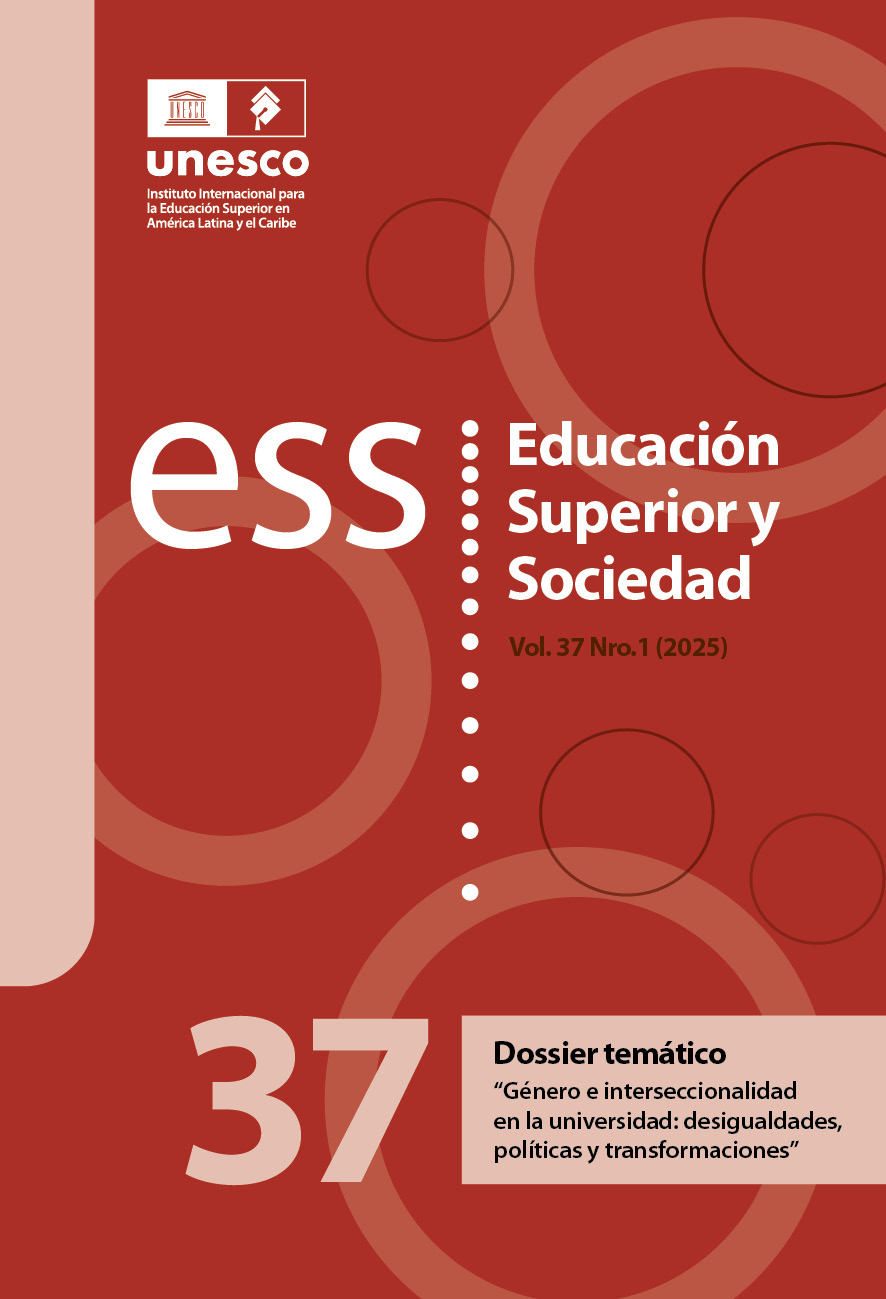Las estructuras organizacionales de las universidades católicas: ¿Qué tan inclusivas son?
Resumen
Este artículo analiza la inclusividad de la estructura organizacional en la Universidad Particular Católica de Guadalajara (UPCG). Examina cómo estas estructuras influyen en la calidad educativa y la capacidad de adaptación al entorno contemporáneo, contrastando las demandas del mercado con los principios filosóficos católicos. Se empleó una metodología cualitativa basada en el interaccionismo simbólico y la fenomenología. Como método se utilizó la entrevista semiestructurada realizada a directivos, personal administrativo, docentes y estudiantes. Así como dos grupos focales: uno con personal administrativo para analizar su percepción sobre la estructura organizacional; otro con estudiantes y egresados para explorar su visión sobre los esfuerzos inclusivos de la universidad. Los resultados demuestran cómo la estructura organizacional de la UPCG ha evolucionado de un modelo simple a una burocracia maquinal, caracterizada por una línea media sobredimensionada y procesos formalizados. Si bien esta estructura buscaba garantizar la estabilidad y la estandarización, generó rigidez, limitando la inclusión de diversos actores y su capacidad de adaptación al contexto. El personal administrativo percibe sobrecarga laboral y falta de agilidad en los procesos. Los alumnos, por otro lado, perciben que esta misma estructura no favorece la inclusión ni la aplicación de los valores institucionales en algunos casos. Para avanzar hacia un modelo más inclusivo, la universidad debe fomentar la participación, la comunicación horizontal y la flexibilidad en la toma de decisiones, equilibrando la formalización con la adaptación a un entorno dinámico.
Citas
Bueno Campos, E. (2007). Organización de empresas: estructura, proceso y modelos. Ediciones Pirámide. bit.ly/3YFbwVx
Cuervo García, Á. (2001). Introducción a la administración de empresas. Civitas Ediciones. https://bit.ly/4jkCcDp
Giddens, A. (2012). Las nuevas reglas del método sociológico. Crítica positiva de las sociologías comprensivas. Amorrortu. https://bit.ly/4iyt2lA
Goodin, R. (2003). Las instituciones y su diseño. In R. Goodin, Teoría del diseño institucional (pp. 13-74). Gedisa. https://bit.ly/4iFsgU8
Koontz, H., Weihrich, H., & Cannice, M. (2012). Administración: una perspectiva global y empresarial. McGraw Hill. https://bit.ly/4jJ0lTV
Mendoza, X., Planellas, M., & Larrosa-Calvo, A. (1995). Estrategia, estructura, decisión, identidad: política general de empresa. Masson. https://bit.ly/4iBGANn
Mintzberg, H. (1991). Diseño de organizaciones eficientes. McGill University. https://bit.ly/3SaVWgL
Mintzberg, H. (2009). Criando organizações eficazes: Estruturas em cinco configurações. Atlas. https://bit.ly/3YlI5YO
Mintzberg, H. (2015). Rebalancing society: Radical renewal beyond left, right, and center. Berrett–Koehler Publishers. https://bit.ly/4iGdSuy
Neave, G. (1998). The evaluative state reconsidered. European Journal of Education, 33(3), 265-284. https://doi.org/10.1111/1467-3584.00086
Powell, W., & DiMaggio, P. (2001). El nuevo institucionalismo en el análisis organizacional. Fondo de Cultura Económica. https://bit.ly/3GuDKMF
Robins, J. (1987). Organizational economics: Notes on the use of transaction-cost theory in the study of organizations. Administrative Science Quarterly, 32(1), 68-86. https://doi.org/10.2307/2392656
Ruiz Mercader, J., & Sabater Sánchez, R. (1999). Análisis de la estructura organizativa y de la influencia que ejerce el tamaño sobre elle. Una aproximación empírica. Dirección y Organización, (21), 66-82. https://doi.org/10.37610/dyo.v0i21.294
Salmi, J. (2022). Equidad, inclusión y pluralismo en la educación superior. Documento encargado para la Conferencia Mundial de Educación Superior 18-20 de mayo de 2022. UNESCO. https://bit.ly/3UjYl8m
Simon, H. (1964). On the concept of organizational goal. Administrative Science Quarterly, 9(1), 1-22. https://doi.org/10.2307/2390804
UNESCO. (2022). Equidad, inclusión y pluralismo en la educación superior. Documento encargado para la Conferencia Mundial de Educación Superior 18-20 de mayo de 2022. https://bit.ly/3UjYl8m
Derechos de autor 2025 Alejandro Uribe López

Esta obra está bajo licencia internacional Creative Commons Reconocimiento-NoComercial 4.0.
Los derechos de autor permiten la protección del material original, y frena la utilización del trabajo ajeno sin permiso. UNESCO IESALC se adhiere a las licencias Creative Commons en la publicación de acceso abierto de la ESS. En concreto, los textos publicados en esta revista están sujetos a una licencia Creative Commons Reconocimiento-NoComercial 4.0 Internacional (CC BY-NC 4.0): La ESS es una revista de acceso abierto, lo que significa que todo el contenido está disponible gratuitamente para el usuario o su institución. Los usuarios pueden leer, descargar, copiar, distribuir, imprimir, buscar o enlazar a los textos completos de los artículos, o utilizarlos para cualquier otro fin lícito, sin pedir permiso previo al editor o al autor, procurando siempre cite al autor. No se permite el uso comercial. La ESS requiere que los autores acepten el Copyright Notice como parte del proceso de envío. Los autores conservan todos los derechos.
La licencia completa puede consultarse en https://creativecommons.org/licenses/by-nc/4.0/
 Reconocimiento – NoComercial (CC BY-NC 4.0)
Reconocimiento – NoComercial (CC BY-NC 4.0)
Esta revista no aplica ningún tipo de cargo a los autores por la presentación o procesado de los artículos. Los autores de las colaboraciones recibirán acuse de recibo de que el trabajo ha llegado al Equipo Editorial de la Revista.




